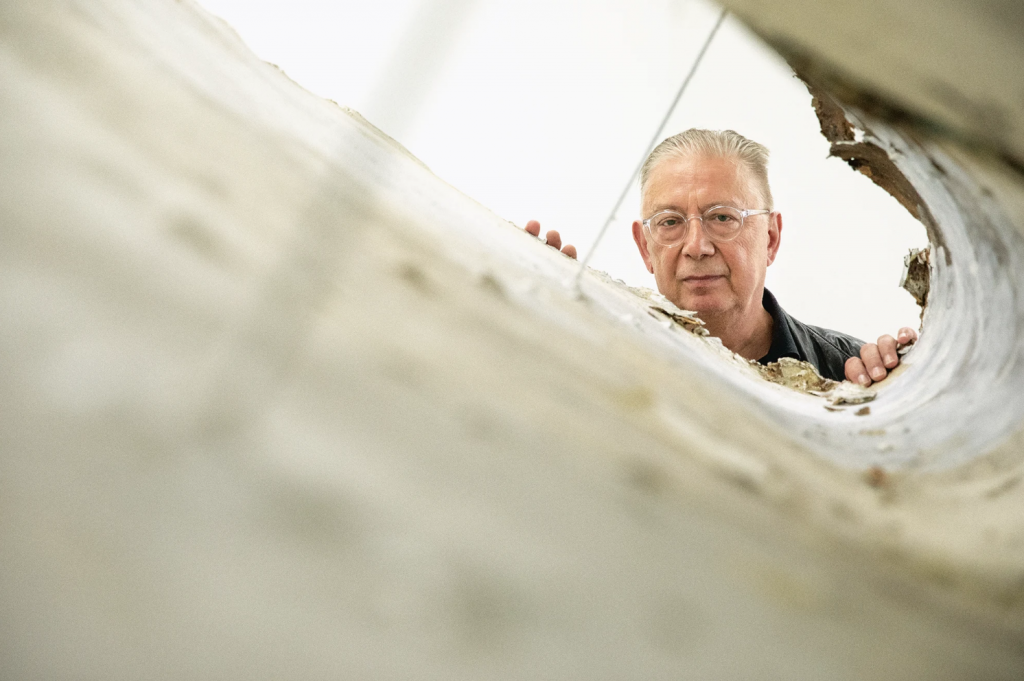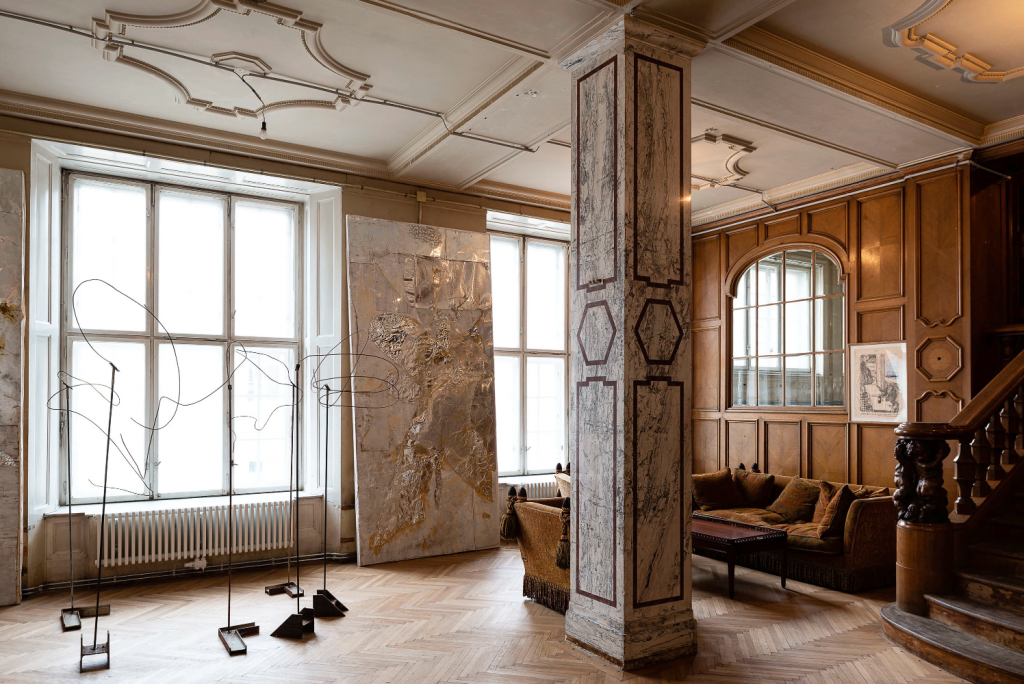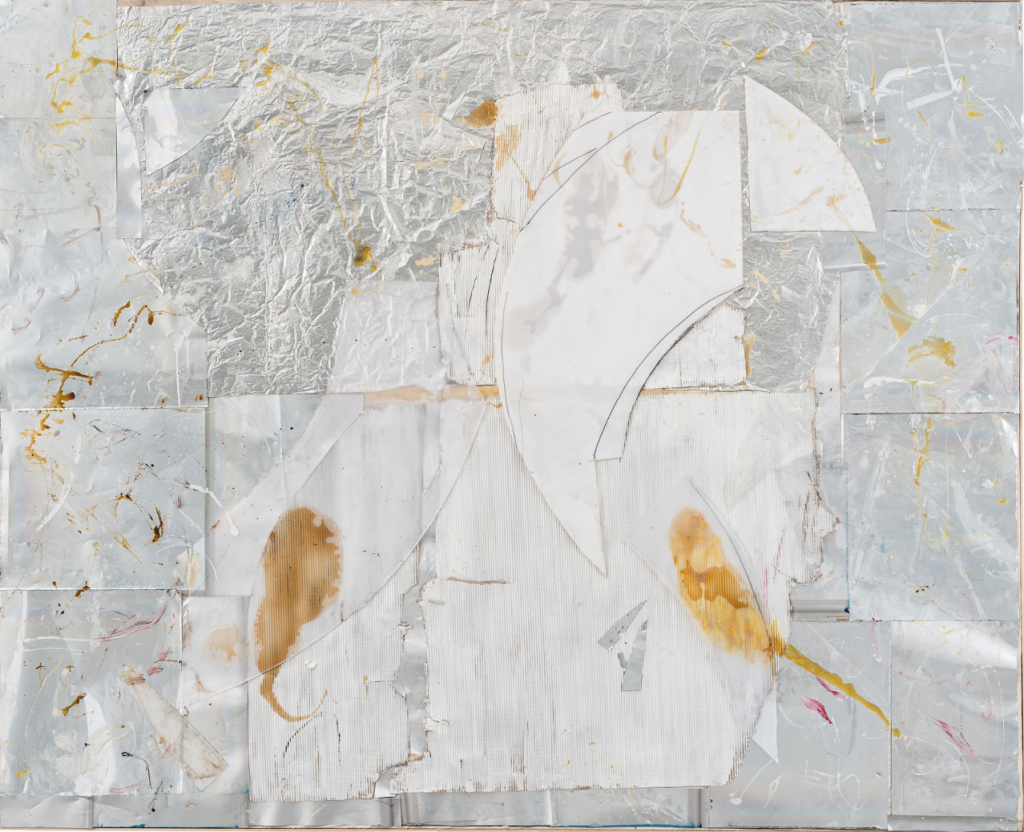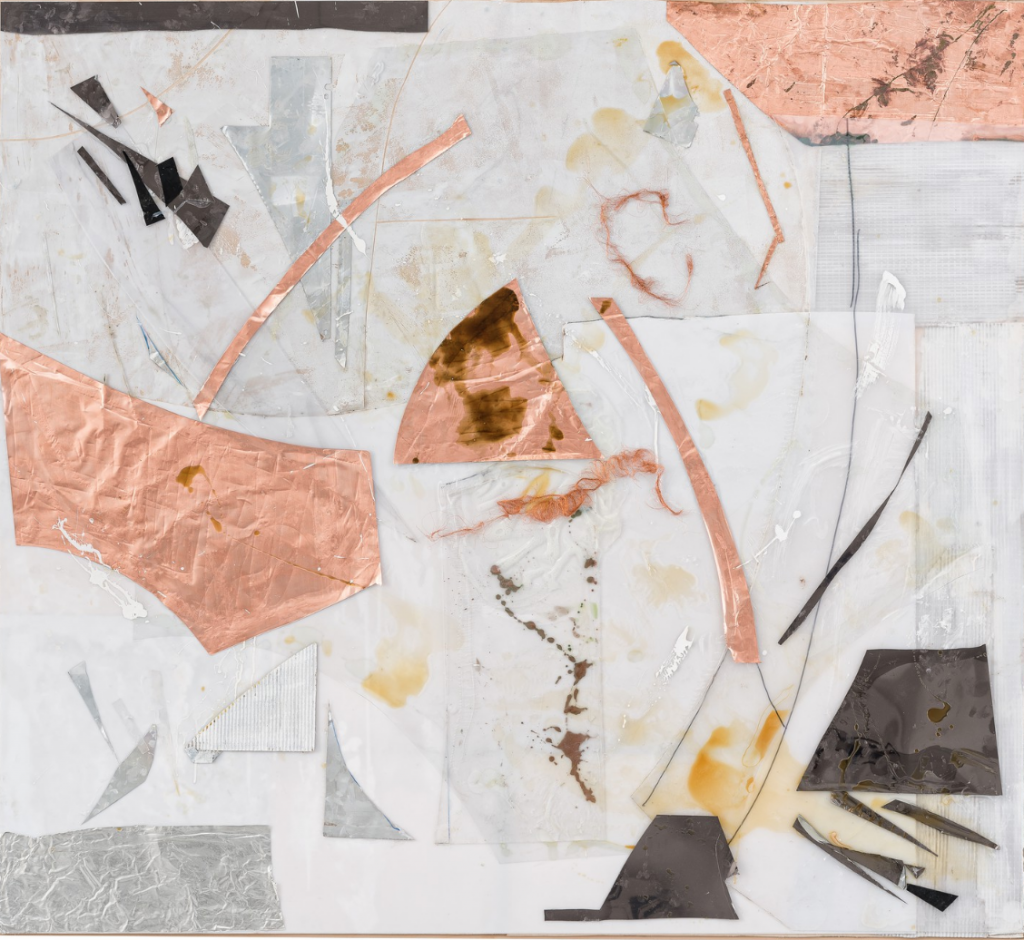See Inside the Studio of Artist Rudolf Polanszky, Whose Weathered Industrial ‘Reconstructions’ Are on View at Gagosian Paris


Katie White

In the early 1990s, Austrian artist Rudolf Polanszky began experimenting with an ad hoc style of mixed-media painting that reconfigured salvaged industrial materials like acrylic glass, aluminum, mirrored foil, resin, silicone, and wire. The artist often leaves the individual components of his works outdoors, letting the natural elements help determine his constructions’ final surfaces and forms.
The series, which began in 1991 and came to be known as “Reconstructions,” has continued across the years. Now, in an exhibition on view at Gagosian Paris, the artist is debuting new “Reconstructions” that incorporate copper foil for the first time.

View of Rudolf Polanszky’s studio. © Rudolf Polanszky. Photograph by Jorit Aust. Courtesy of Gagosian.
In these works, the white planes of corrugated cardboard are covered in silvery aluminum and sheets of copper. Also on view are two recent sculptures made of the same repurposed objects, which Polanszky has manipulated in dynamic abstractions.
“In Polanszky’s hands, industrial fragments are transformed into shimmering arrangements that transcend their mundane origins,” reads a statement from the gallery.
We spoke with the artist about the importance of his new exhibition, his studio habits, and how his early Actionist art from the 1970s and ’80s is still informing his work today,

Rudolf Polanszky, Reconstructions / Choros / Ecliptics (2020). Courtesy of Gagosian.
Tell me about the works you’ve included in your current exhibition at Gagosian?
The current exhibition at Gagosian showcases many ideas that are central to my work: My idea of an evolutive character within the pictures is one of the most important, as well the pursuit of transformation over time. An example of this is the new use of mirrored foils in many pieces, such as the ‘dark mirror’ works. In these pieces, different ideas of symmetry and the complementary are found in aspects of mirroring the space of the viewer in front of the picture. My goal is to develop works that alter perception in new ways and that display reflections of reality to find new modes of perception. In the recent show, many of these pictures and sculptures also include copper, which is a new addition in keeping with much of my recent production.
What inspired this addition of copper foil? What effect does it bring to the works?
“Reconstructions” means working with different materials and placing them together, seeing them as fragments and parts of a forgotten identity. Copper foil is a kind of material called an “element.” It is hermetic in its identity and has a long tradition in human artworks.

Rudolf Polanszky, Reconstructions / Choros / Ecliptics (2020). Courtesy of Gagosian.
For some artists, the past year has brought great change to their lives and work. For others, the days of heading to and from the studio are not so different. How have you been affected by the pandemic?
The pandemic is a tragedy for everyone. I have the luck as an artist to be marginally affected by the pandemic and can work nearly in the same rhythm as before. The studio is very near to the place where I live.
Do your earlier Actionist-inspired works have anything in common with your “Reconstructions” and sculptures?
My work of the ’70s and ’80s is very important for the work I am doing now. Works from that period can be found at the Centre Pompidou and many are in private hands as well.
While working I prefer privacy and concentration. I love to listen to music but not while working. I have no clear rules about when to start or finish working; sometimes I work during the night and sometimes I start in the morning and see where the day takes me.

Rudolf Polanszky, Reconstructions / Choros / Ecliptics (2020). Courtesy of Gagosian.
You sometimes leave your materials outside, to weather, quite literally. Can you tell me why you do that? In what ways has the environment affected the materials?
The viewer’s perception of material is related to its form. Weather and conditions of outside storage that act upon different materials that I use, develop visual forms that I never could have constructed in a conscious way from the sources I have learned, and thus become a new place from which to work further.
How do you know when a work is complete?
A work is finished when I find a way out of it, maybe into the next one, or if it presents another reason to move beyond it.
What would you say is your favorite tool in your studio right now?
My favorite tool is the switch, to turn on and off the light.
See the video below for a tour of Rudolf Polanszky’s studio.